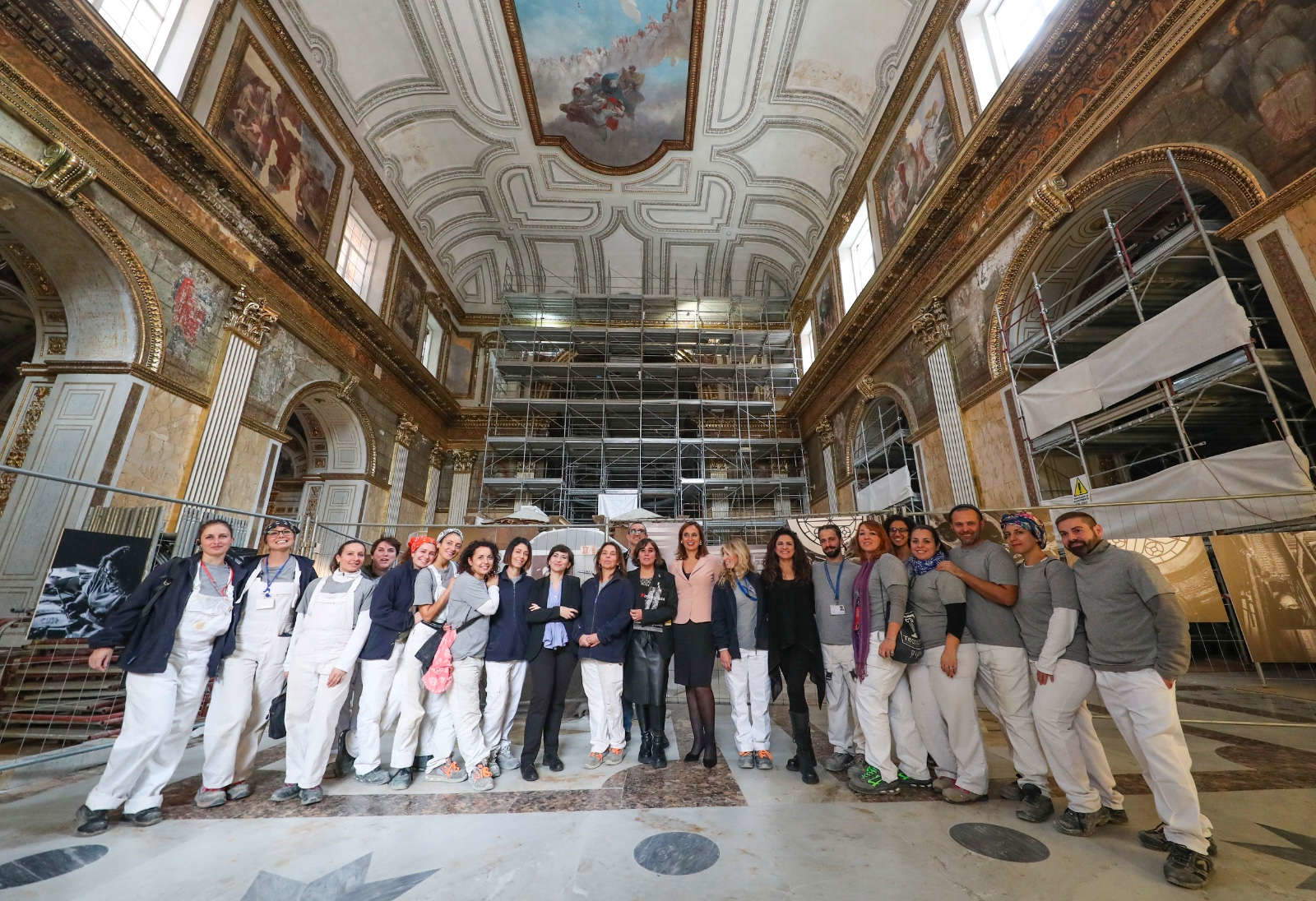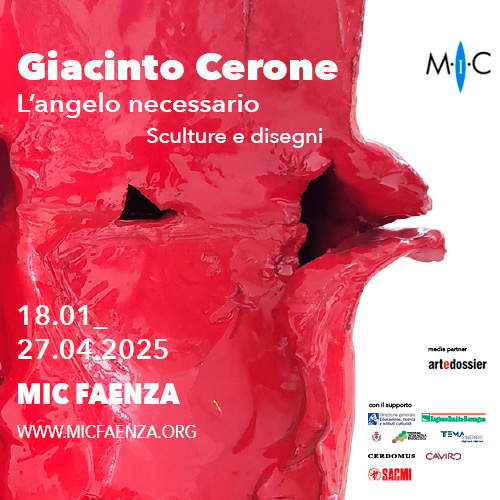Naples, restored the Scalone d?'Onore of the Royal Palace: 100 days to let a symbol of Naples shine
After one hundred days of intense work, the Scalone d’Onore of the Royal Palace of Naples is once again shining, returning one of the most recognized symbols of the architectural complex to visitors. At the same time, an important new construction site kicks off: the one dedicated to the securing and future restoration of the Royal Chapel, another jewel of the Neapolitan artistic heritage.
“Another piece is added to the immense map of works that take place daily inside the Royal Palace,” says Paola Ricciardi, director delegated by the General Director of Museums, Massimo Osanna. “Today, at the same time we can observe the results of a completed restoration and the work of an open construction site with which we make visitors participate in the hard work being done by restorers, at times very demanding that is transformed into art through a small photographic exhibition.”




A restoration in the name of beauty and technique
The restoration project, launched on June 16 and entrusted to the CO.MA.BER Consortium with the execution of the company Officine Marmi Italia, focused on recovering the original whiteness of the Carrara marble. The interventions, directed by architect Stefano Gei, involved a scientific and meticulous approach, with a preliminary study phase to identify the most suitable products for surface treatment.
After the removal of dirt and impurities, special compresses were applied to extract the oxidation present on the marble. The operation concluded with polishing and the application of a protective coating to improve resistance to moisture and preserve the material over time. The result is a 750-square-meter surface, elevated 30 meters in height, which has now returned to its original brightness.



A historical masterpiece: the Staircase of Honor
The Scalone d’Onore represents one of the most celebrated elements of the Royal Palace. Originally built between 1651 and 1666 to a design by Francesco Antonio Picchiatti in piperno stone, it was later redesigned by architect Gaetano Genovese in the early decades of the 19th century, who made it a work of great refinement in marble. In 1729 Montesquieu called it “le plus beau escalier d’Europe,” making it internationally famous.
The years, fires and weathering had left their mark, but restoration has restored the monument to its former glory, making it once again a protagonist of Naples’ cultural itineraries.



The Royal Chapel: between urgency and enhancement
Simultaneously with the completion of work on the Scalone, work is being done on the Royal Chapel. Here the restorations, which started with an emergency securing, are laying the groundwork for a larger and more articulated project. Water infiltration had damaged the precious decorated surfaces, requiring immediate interventions that involved an expenditure of 400 thousand euros.
This emergency phase will be followed by comprehensive restoration work, for which a budget of one million euros has been allocated. Preliminary studies have made it possible to map the damaged areas and deepen knowledge of construction techniques, in order to better direct future work.
Almerinda Padricelli, architectural officer at the Royal Palace and project manager, recalls that “the two interventions are funded by the MIC Grand Project. The first one restores the bright and candid vision of the marbles of the Scalone, while in the second intervention the works were carried out to consolidate and map precious surfaces, but they also allowed for in-depth and important studies to orient the design of the future site for the completion of the restoration of the surfaces, so as to better enhance the areas of intervention in the Royal Chapel.”


An exhibition chronicling the restoration
In anticipation of the completion of the restorations, the Chapel is hosting a photography exhibition entitled Working Class, conceived by Barbara Balbi, ABAP restorer, and Almerinda Padricelli, project manager. The exhibition focuses on the work of 20 restorers working on the site, immortalized in 15 shots signed by Camillo Ripaldi.
The images, displayed on six panels, testify to the commitment and dedication of the workers who work every day to preserve the cultural heritage. This project highlights both the artistic aspect of restoration, as well as its physical and technical component, offering food for thought on the issue of safety on construction sites, which is particularly felt in the contemporary context.
“The exhibition,” says Barbara Balbi, director of works, “emphasizes some less usual aspects of the work of restorers by highlighting how restoration is physically burdensome and at the same time establishes a very close link with the material of the artwork. ”The occasion of a large construction site, moreover, makes us think about the safety of workers at a time in history when the issue is still very much felt: in this sense, photography helps to look better and closer."
The restoration of the Scalone d’Onore (Staircase of Honor) and the start of work on the Royal Chapel represent two milestones in the recovery and enhancement of the Royal Palace. In a place where the past meets the future, the daily work of restorers becomes a bridge that unites art, technique and dedication, offering visitors a unique and evocative experience.
 |
| Naples, restored the Scalone d?'Onore of the Royal Palace: 100 days to let a symbol of Naples shine |
Warning: the translation into English of the original Italian article was created using automatic tools. We undertake to review all articles, but we do not guarantee the total absence of inaccuracies in the translation due to the program. You can find the original by clicking on the ITA button. If you find any mistake,please contact us.





























